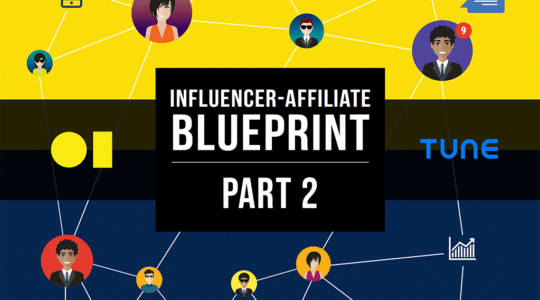
We’re increasingly seeing our world change to a very mobile one. Whether you’re in the travel biz like Expedia, all about retail like Nordstrom, focused on homes like Redfin, trying to be the top CRM for B2Bs like Salesforce, or just trying to own photo and video like Snapchat, brands of all kinds are putting more effort and investment into reaching their audiences on mobile.
But are those investments actually paying off? Let’s talk about what to measure and how to answer the age-old business question: Is the return worth the investment, otherwise known as ROI (return on investment).
First, let’s take a look a few facts from the 2016 Global Mobile Report:
- In 2015, 800 million people around the globe bought their first smartphones. This year, 600 million more are expected to join them.
- 6.5 billion people will be smartphone owners in 2020.
- 400,000 new apps were added by developers in 2015 on Google Play and the iOS app store.
- 50 billion more downloads occurred in 2015 than the the prior year.
Mobile Taking Over Digital Spend
So what are businesses are doing to adapt to this new world? For starters, getting their websites optimized for mobile. In Q4 2014, the CMO Council and SAS surveyed marketers worldwide to learn mobile marketing tactics and found 75% had a mobile-optimized website vs 66% who had a mobile app.
But how many businesses have both? That’s where it gets tricky. Mobile web is a website that is responsive and designed specifically for devices varying in screen size, whereas a mobile app is an application that sits on our devices and must be downloaded and installed.
According to TUNE CEO Peter Hamilton, we’re going to see more streamlined web experiences in 2016 that ease the path to purchase first on web, and then deepen the experience in an app. A convergence of the two mediums.
But all kinds of mobile investment is increasing among marketers. In 2016, mobile ad spending in the US will jump 40% to reach over $40 billion, or 60% of digital ad spending. And with more dollars comes more demand for measurement.
But measurement of mobile — from what to measure to what is meaningful to measure — is an ongoing struggle for many mobile marketers, especially when you factor cross-channel, multi-channel and omni-channel attribution, which all rely on the ability to link up data from customer experience and customer journeys from online and offline, spanning channels and devices. It can be complex, but it’s not impossible.
3 Ways to Boost Your Mobile Marketing ROI
As technology advances, marketers are getting more optimistic about being able to tie revenue to marketing activities. According to Econsultancy and Adobe, 51% of marketers reportedly measure user engagement and ROI from mobile efforts. But getting there requires tracking the activities of a marketing campaign, measuring the right things, and showing the payoff. Here’s how it is done.
- Measure customer acquisition investments with effective attribution
The pathways the lead to an app install can become pretty complex. Was it the five ads that popped up on your Facebook feed that got you to click-through to the App Store. Or was it a recommendation from a friend, and you search and click download right away? Maybe you saw an ad on TV? Or was it on Hulu? YouTube?
Regardless of how you got there, it’s important to know as a marketer what impressions and ad clicks drove someone to an app install so they can determine the most effective channels and spend ad budgets more effectively. Once a new user is acquired, it’s imperative to know what’s driving the activity within the app or in-app events.
Using software that provides analytics around attribution allows you to effectively evaluate campaign performance to know what’s working so you can be smarter about where to put your ad dollars. If you go beyond the last click to measure the impact of touch-points throughout the customer’s journey, you’ll learn which sources generate value at which stage of the funnel.
Check out Attribution Analytics, part of the TUNE Marketing Console, and learn more about measuring attribution in this white paper.
- Master organic acquisition with app store optimization
Now that you understand what’s driving paid user acquisition, it’s time to focus on organic. With over 1.5 million apps in the Apple and Android app store, it’s important to understand how your app is stacking up against the competition. What is actually motivating people to download your app?
There are so many different ways to make your app stand out and be discoverable — whether it be the app icon, the screenshots, the app name, description or keywords chosen. But with so many different ways to test, how are marketers to know what truly is working the best?
Consumer surveys are one way to try and learn what users think they care about, but behavioral data is the real deal. A/B testing can help answer the questions like: Which icon do people like better? Do certain keywords help with rankings? Once you know the answers to your questions, optimize.
TUNE clients see an average 20% increase in monthly organic installs after implementing changes recommended by App Store Analytics. Learn more about what app store factors your users really care about here.
- Provide a mobile experience and use re-engagement
A personalized mobile experience is a profitable one. You’ve already taken the scary leap to put time and resources to getting your brand thinking and acting on mobile, so why not make it memorable? Stand out from the crowd. Use mobile to transform your brand experience.
And don’t forget about who you’re trying to engage! Make an effort to understand your audience and observe what they’re actually doing on mobile. Enterprises and startups will win when they focus on deep connection, meeting their best customers right where they are — on mobile. Then differentiate yourself; develop mobile-unique interactions and provide clear, customer-focused value in your app. Your users will thank you.
More than ever, marketers have to earn their download but then be engaging and valuable enough not to get abandoned. Are the messages you’re sending to your users inspiring them to be more active in your app? Ensure each push notification you send drives your app users back into your app and keeps them there.
If you master the ability to talk to your users while keeping it personal and interesting, you’ll win long lasting engagement. Turning your monthly users into weekly users, weekly users into daily users and—well, you get the idea.
So deliver the right content at the right time and optimize your user’s experience. Use a solution like In-App Marketing to more than double your deeply engaged audience and maximize each user’s value.
With a few simple tricks, you can not only master mobile marketing, you can show how your campaigns are driving revenue, and be a hero for your app.
Like this article? Sign up for our blog digest emails.
Author
Becky is the Senior Content Marketing Manager at TUNE. Before TUNE, she handled content strategy and marketing communications at several tech startups in the Bay Area. Becky received her bachelor's degree in English from Wake Forest University. After a decade in San Francisco and Seattle, she has returned home to Charleston, SC, where you can find her strolling through Hampton Park with her pup and enjoying the simple things between adventures with friends and family.




Great stats and comprehensive suggestions, Cortney!
Mobile marketing, as part of digital, offers the promise of improved measurement and efficacy. But are marketers realizing these benefits? CIOReview has curated this Roundup of articles, insights and interviews to explore what challenges mobile marketers still face in measuring their efforts, what strides they have made, and how they continue to address issues like engagement, viewability and tying what happens on mobile to the bottom line.
Must check Swvre’s white paper listed on our website titled : “Quantifying The ROI Of Mobile Marketing”